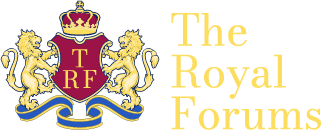THE SEA OF LIGHT DIAMOND
"Darya-e Noor"
One of the largest diamonds in the world, this pink diamond and the Koh-e Noor (Mountain of Light) diamond were both brought back from India by Nader Shah in 1739. After the death of Nader Shah, Ahmad Shah Durrani took the Koh-e Noor to Afghanistan, where it passed onto Shah Shuja. He, in turn, was defeated by Ranjit Singh, the Lion of the Punjab. Eventually, it fell into the hands of the East India Company, which presented it to Queen Victoria. The Kohi Noor is now incorporated in the Queen Mother's crown. The Kohi Noor is said to bear a curse since all the male owners of the Kohi Noor suffered terrible fates.
This Darya-e Noor (Sea of Light) diamond, however, has a different story.
After Nader Shah's death, the Darya-e Noor was inherited by Shahrokh Mirza, his grandson. It then came into the possession of Alam Khan Khozeimeh, and later, Lotfoli Khan Zand, a member of Iran's Zand Dynasty.
Agha Mohammad Khan, cruel founder of Qajar dynasty, defeated the Zands, and so it came into the possession of the Qajars.
Fathali Shah Qajar had his name inscribed on one facet. Later, Nasseridin Shah Qajar believed that that this diamond was one of the gems decorating the crown of Cyrus the Great, so he often wore it on an armband. When armbands fell from royal fashion, he wore it as brooch. On occasion, the gem would be left in the care of high personages of the land, as a sign of honor, though it was eventually kept hidden in the Golestan Palace treasury museum until Mozzafaridin Shah's time, when he wore it as a hat decoration while visiting Europe in 1902.
Reza Shah, the founder of the Pahlavi dynasty, wore it as a decoration on his military hat during his coronation in 1926, and it was used in Mohammad Reza Shah Pahlavi's coronation ceremony in 1967.
There is no doubt that the diamond was taken from the Golkandeh mines of southern India. In 1965, a Canadian team which was conducting research on the Imperial jewels concluded that this Daraye Noor may have been part of a large pink diamond which was incorporated in the throne of the Moghul emporor Shah Jehan and described in the journal of the French jeweller Tavernier in 1642, who called it the "Diamanta Grande Table" in his journal. This diamond may have been cut into two pieces; the larger part is the Sea of Light, and the smaller part of is believed to be the Noor-ol Ein diamond which is presently incorporated in a tiara in Iranian imperial jewel collection. Including the frame, it is 7.2 cm. (2.9 in.) high and 5.3 cm. (2.1 in.) wide. It is believed to weigh between 182 to 186 cts. Fathali Shah's name is inscribed on one facet.
